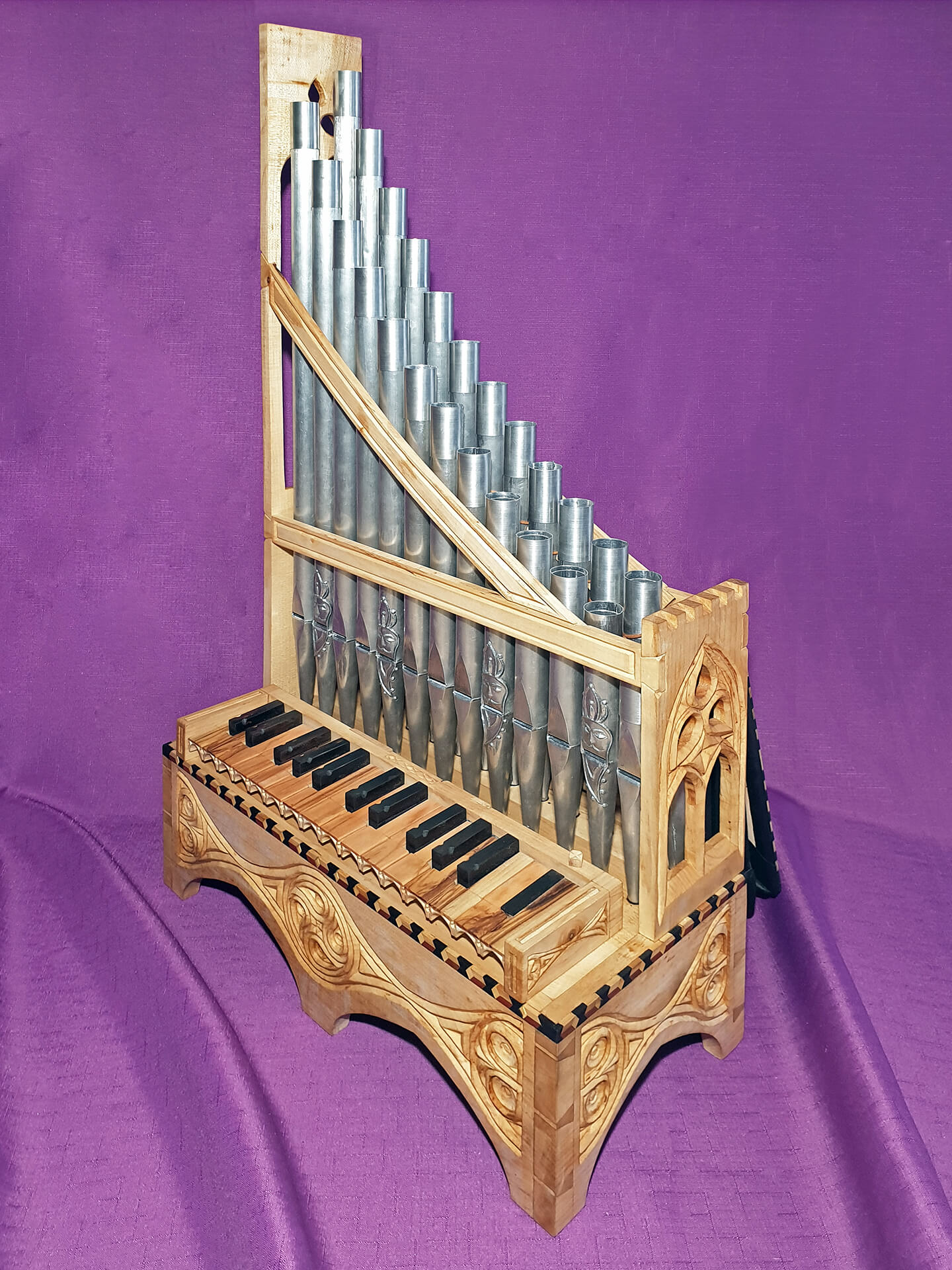This organ portative is tuned in the Gothic style and was assembled completely according to the designs coming from our workshop. It is made of quality maple hand-planed wood. The upper edge of the cabinet and the edge of the bellow are decorated with an inlaid ribbon made of several types of wood - olive, ebony, boxwood and plum. Thanks to this, the visual drama is achieved, which is further enhanced by carvings inspired by the German Gothic chest dating from the 14th century. The cabinet is connected through authentic dovetail joints andsliding, which were intentionally admitted;complete the resulting aesthetic feeling from the instrument.

The basis of the keys is light linden wood. The whole tones, whose fronts are decorated with a Gothic arch and a trefoil, are covered with olive wood. The halftones are then covered with ebony wood and decorated with small grooves. All keys are hung on parchment and keyboards range from c1 to c3, respectively. cis3 or d3.
In accordance with contemporary practice from the Gothic period, the instrument has only 1 bellows located on the back intended for the left hand and therefore does not have a continuous supply of air, as in the case of the classical large organ. Playing on instrument requires a slightly different approach and enough skills. On the bellows you will find a vignette with the brand of our workshop and the marking of the instrument with the opus number 6.
The instrument has one permanently sounding register made of tin pipes. The flutes of this portative are made of hand-planed organ metal composed of 70% tin and 30% lead. Decorating the organ is done by a relatively unusual method, which is used mainly in jewelry. This is the chiseling technique we present to you in the video.
Notice also the unusual motif of decorating the pipes in the form of singing clowns in the area of the fipple. We get the most authentic Gothic sound, which we try to achieve by intonating the pipes into the principal at full flow of air into the foot and without nicking on the core. It is complemented by slit tones. The intonation of the pipes is therefore very natural and the resulting sound is not further cultivated in any way. In accordance with primary sources, the pipes have the same thickness scale throughout, regardless of pitch. Thanks to this, they sound very principled up to sliding in the lowest positions,in the lower middle positions sounds as a classical principal, in the middle position as a flute principal and in the upper position as a very colored flute.
Modern practice requires that the instrument have a transposition of 415 Hz, 440 Hz and 460 Hz. Due to this, it was not possible to cut the pipes to the appropriate tonal length, and it was therefore necessary to use rings made from organ metal placed on the mouth of the pipe for tuning.
Do not hesitate to contact us